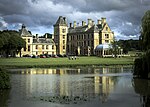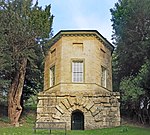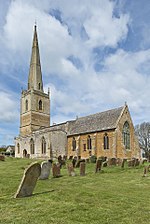Ettington
AC with 0 elementsCivil parishes in WarwickshireUse British English from July 2016Villages in Warwickshire

Ettington is a village and civil parish about 5.5 miles (9 km) south-east of Stratford-upon-Avon in Warwickshire, England. The 2011 Census recorded the parish's population as 1,171. The present village is on the A422 main road linking Stratford and Banbury. The A429 main road linking Warwick and Cirencester used to run through the village, and now uses a bypass just west of it. The Fosse Way Roman road (B4455 road) crosses the A422 0.6 miles (1 km) east of the village.
Excerpt from the Wikipedia article Ettington (License: CC BY-SA 3.0, Authors, Images).Ettington
Banbury Road, Stratford-on-Avon
Geographical coordinates (GPS) Address Nearby Places Show on map
Geographical coordinates (GPS)
| Latitude | Longitude |
|---|---|
| N 52.138 ° | E -1.608 ° |
Address
Ettington SPAR & Post Office
Banbury Road
CV37 7SU Stratford-on-Avon
England, United Kingdom
Open on Google Maps









